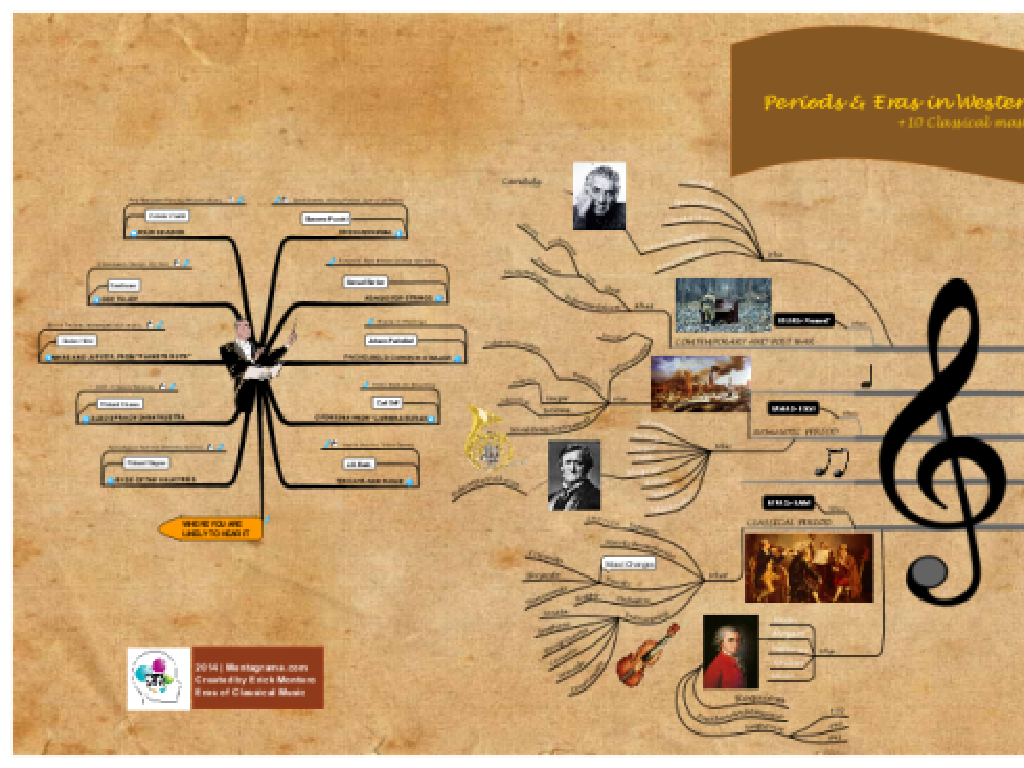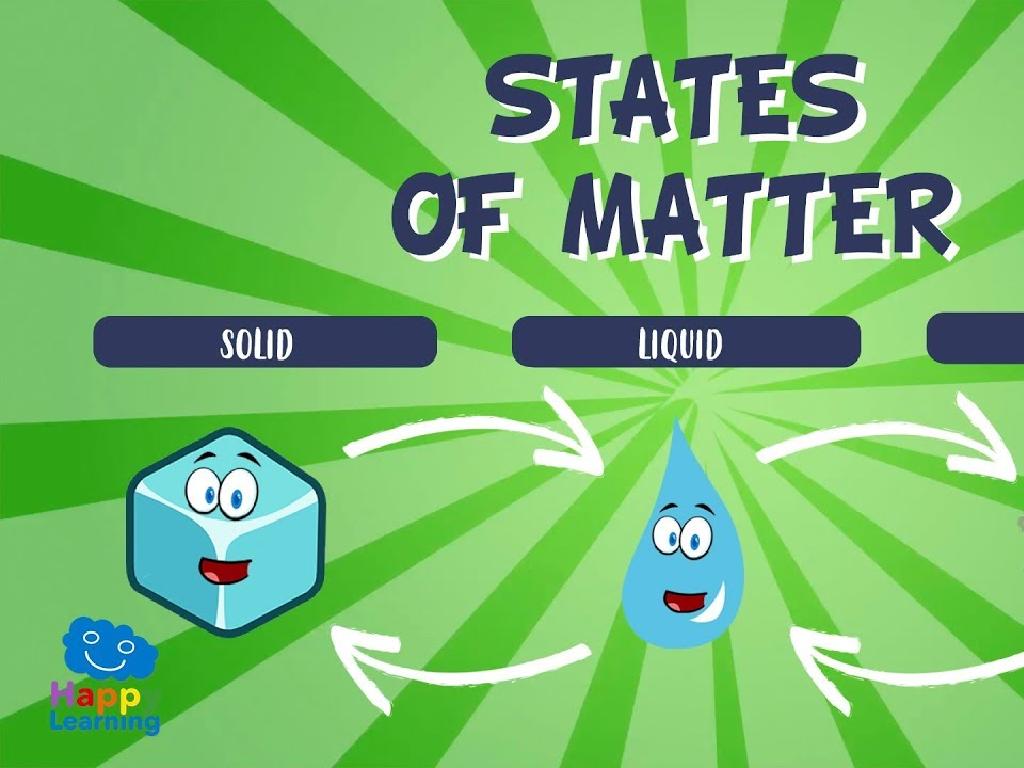Compare Amplitudes, Wavelengths, And Frequencies Of Waves
Subject: Science
Grade: Eighth grade
Topic: Waves
Please LOG IN to download the presentation. Access is available to registered users only.
View More Content
Welcome to Waves: Key Properties
– Waves: The Basics
– Waves transfer energy through oscillations.
– Amplitude, Wavelength, Frequency
– Amplitude: Wave’s height. Wavelength: Crest-to-crest distance. Frequency: Cycles per second.
– Significance of Wave Properties
– These determine the wave’s energy, sound pitch, light color, etc.
– Exploring Practical Examples
– Examples: Sound volume (amplitude), radio stations (frequency), colors of light (wavelength).
|
This slide introduces students to the fundamental concepts of waves and their key properties. Begin with a basic definition of waves as oscillations that transfer energy from one point to another. Explain amplitude as the height of the wave from the rest position to the crest, wavelength as the distance between successive crests, and frequency as the number of cycles that pass a point per second. Emphasize the importance of these properties in everyday phenomena such as the loudness of sounds, the tuning of different radio stations, and the visible spectrum of light. Use practical examples to illustrate how these properties are observed and applied in real life, enhancing students’ understanding of the concepts.
Understanding Waves: Types and Examples
– Define a wave in science
– A wave is a disturbance that transfers energy through matter or space.
– Explore transverse & longitudinal waves
– Transverse waves move perpendicular to energy transfer, longitudinal parallel.
– Real-life wave examples
– Ocean waves (transverse), sound waves (longitudinal).
– Comparing wave properties
– Amplitude, wavelength, and frequency are key properties to compare.
|
Begin with a clear definition of a wave, emphasizing its role in energy transfer. Differentiate between transverse and longitudinal waves with diagrams, highlighting the direction of energy movement. Provide tangible examples: ocean waves can be seen, while sound waves can be heard. Encourage students to visualize waves in their surroundings. Discuss the importance of amplitude, wavelength, and frequency in wave behavior and how these properties can be compared and measured. This foundational knowledge sets the stage for deeper exploration into wave properties and their applications in various scientific contexts.
Amplitude of a Wave
– Define wave amplitude
– Amplitude is the wave’s height from its rest position.
– Amplitude’s relation to energy
– Greater amplitude means more energy; think of loud sounds vs. soft sounds.
– Visual comparison of amplitudes
– Use graphs to show high vs. low amplitude waves.
– Amplitude in various wave types
– Compare amplitudes in water, sound, and light waves.
|
This slide introduces the concept of amplitude and its significance in understanding waves. Amplitude is the maximum extent of a vibration or oscillation, measured from the position of equilibrium. Emphasize the direct relationship between amplitude and energy; for example, louder sounds have waves with higher amplitudes. Use visual aids like graphs to illustrate the difference in amplitude between waves. Encourage students to think about how amplitude varies in different types of waves they encounter in daily life, such as the gentle ripples in a pond versus large ocean waves, or the differences in brightness in light waves.
Understanding Wavelength in Waves
– Define wavelength of a wave
– Distance between consecutive crests or troughs
– Wavelength’s impact on energy
– Longer wavelengths have less energy than shorter ones
– Measuring wavelength
– Use meters to measure; from crest to crest or trough to trough
– Wavelength in different waves
– Compare light waves, sound waves, and water waves
|
This slide aims to explain the concept of wavelength as a fundamental property of waves and its implications on the energy of the wave. Wavelength is the distance between two consecutive points that are in phase on a wave, such as crest to crest or trough to trough. It’s important to convey that the energy of a wave is inversely related to its wavelength; thus, waves with shorter wavelengths carry more energy than those with longer wavelengths. Students should learn how to measure wavelength and understand that it can be applied to all types of waves, including light, sound, and water waves. Provide examples and perhaps a simple activity where students can measure the wavelength of various waves using a diagram or in a lab setting.
Understanding Wave Frequency
– Define wave frequency
– Frequency is how often waves pass a point in a given time
– Relationship: frequency and energy
– Higher frequency means more energy; think of bright vs. dim light
– Counting frequency in patterns
– Count peaks or troughs in a wave to measure frequency
– Frequency’s role in wave behavior
|
This slide aims to explain the concept of frequency in waves and its significance in understanding wave behavior. Frequency is the number of waves that pass a fixed point in a unit of time, typically measured in Hertz (Hz). It’s crucial to illustrate the direct relationship between frequency and energy; for example, higher frequency light waves are perceived as brighter. Teach students how to count the frequency by looking at wave patterns and identifying the number of peaks or troughs. Emphasize that frequency is a key factor in the behavior and properties of waves, affecting everything from sound pitch to the color of light.
Comparing Wave Properties
– Amplitude, Wavelength, Frequency
– Amplitude is wave’s height, wavelength is distance between peaks, frequency is waves per second
– Interactive examples
– Use slinky or rope to demonstrate waves; observe differences as you adjust each property
– Changing one affects others
– Increasing frequency can decrease wavelength, while amplitude remains unaffected
– Observing wave behavior
|
This slide aims to help students differentiate between amplitude, wavelength, and frequency of waves. Amplitude refers to the height of the wave from its rest position, wavelength is the distance between successive peaks, and frequency is the number of waves that pass a point per second. Interactive demonstrations with a slinky or rope can visually show these differences. Emphasize that changing one property, like frequency, can influence others, such as wavelength, but amplitude might not be affected. This understanding is crucial for grasping wave behavior and its applications in real-world scenarios.
Applications of Wave Properties
– Real-world applications of waves
– Sound waves in music
– Different pitches in music are due to varying frequencies
– Light waves and colors
– Colors are perceived due to different wavelengths of light
– Wave properties in technology
– Used in medical imaging, communication systems, etc.
|
This slide aims to connect the theoretical aspects of wave properties with practical applications that students encounter in their daily lives. By understanding how sound waves contribute to music and how light waves are responsible for the colors we see, students can better grasp the concepts of frequency and wavelength. Additionally, highlighting the significance of amplitude, wavelength, and frequency in the development of various technologies, such as ultrasound machines and wireless communications, can spark interest in how science is applied in innovative ways. Encourage students to think of other examples where wave properties are essential, and discuss how these properties can be manipulated to serve specific functions in technology.
Class Activity: Wave Simulation
– Gather materials: rope or slinky
– Form groups for wave creation
– Follow wave simulation instructions
– Create waves by flicking one end, observe how the wave travels
– Observe changes in amplitude, wavelength, frequency
– Compare how wave properties change with different flicks
|
This activity is designed to help students visualize and understand the concepts of amplitude, wavelength, and frequency in a hands-on manner. Divide the class into small groups and provide each group with a rope or slinky. Students will take turns flicking one end of the rope or slinky to create waves. They should observe how the wave travels and note changes in the wave’s properties as they experiment with flicks of varying strength and speed. Encourage students to discuss their observations and relate them to the theoretical concepts they’ve learned. Possible variations of the activity could include measuring the distance between waves for wavelength, counting the number of waves produced in a set time for frequency, and comparing the height of waves for amplitude.
Wave Properties: Observations & Conclusions
– Observations from wave activity
– Effects of amplitude changes
– Increasing amplitude raises wave height
– Effects of wavelength and frequency
– Wavelength affects wave spacing; frequency affects wave speed
– Sharing our findings
|
This slide is meant to facilitate a discussion following a class activity on wave properties. Students should share their observations on how altering amplitude, wavelength, and frequency affected the waves they studied. Emphasize the importance of understanding that amplitude is related to the energy of the wave, while wavelength and frequency are inversely related and define the wave’s speed and spacing. Encourage students to articulate their findings clearly and listen to their peers’ observations to build a comprehensive understanding of wave behavior. Prepare to guide the discussion, ensuring that each student has the opportunity to contribute and that key concepts are reinforced.
Waves: Recap and Looking Ahead
– Recap of wave properties
– Amplitude, wavelength, and frequency are fundamental aspects of waves.
– Significance of wave understanding
– Waves are essential in many fields, from technology to nature.
– Preview of next wave lesson
– We’ll explore wave interactions and behaviors next class.
– Encourage questions and discussions
|
This slide aims to consolidate the students’ understanding of the key properties of waves, emphasizing the importance of amplitude, wavelength, and frequency. Highlight how waves play a crucial role in various applications such as communication, medical imaging, and even in natural phenomena like sound and light. Next lesson, we will delve into how waves interact with each other and their environments, including concepts like reflection, refraction, and diffraction. Encourage students to ask questions about today’s material and to think about how waves affect their daily lives, setting the stage for a more in-depth exploration in the upcoming class.





